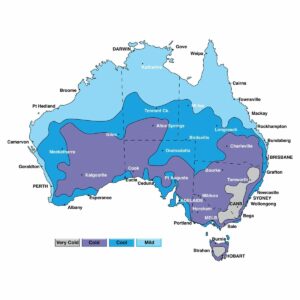Flued Gas Heaters vs Unflued Gas Heaters – Portable Gas Heater Reviews
Australians looking to buy gas heating will find that the available gas heaters for sale are broadly grouped as either unflued gas heaters (portable gas heater or gas bayonet heater) or flued gas heaters for the home.
Both are available in either natural gas or LPG models.
What is the difference between flued gas heaters vs unflued gas heaters (portable gas heater or gas bayonet heater) and which one should you buy?
Here is a review of the pros and cons for you to consider when you decide on which type of heater is right for you:
Unflued Gas Heaters – Portable Gas Heater – Gas Bayonet Heater
Unflued gas heaters (portable gas heater or gas bayonet heater) are typically much more energy efficient than flued gas heaters and have higher Energy Star ratings.
Unflued gas heaters are also less expensive, as they do without any flue kit and the installation is much faster.
Portable gas heaters (gas bayonet heater) have neither a flue nor a chimney.
As a result, they release some combustion gases and water vapour directly into the home.
The maximum levels released by unflued gas heaters (portable gas heater or gas bayonet heater) are specified by government safety regulations.
Flued Gas Heaters – Rinnai Flued Gas Heaters
Flued gas heaters have a flue pipe that directs combustion gases out of your home through a flue or chimney.
This means that there are no combustion gases and water vapour emitted inside your home.
Some flued gas heaters have a powered flue, with an electric fan driving the gases out of the flue.
Flued gas heaters tend to cost more than unflued gas heaters (portable gas heater or gas bayonet heater) because of the extra flue hardware and installation required.
Learn more about the details involved with both types of heaters…
Indoor Emissions – Are Unflued Gas Heaters Safe (Natural Gas or LPG)
The term “flued” refers to the fact that the combustion gases generated when the gas is burnt are directed out of your home by means of a fixed flue pipe through the wall or ceiling.
As a result, there are no emissions in your home.
The accompanying diagram shows an installation example of a flue through a wall
Care should be taken when using unflued gas heaters (portable gas heater or gas bayonet heater) if the family includes very young, unborn, elderly or individuals with some medical conditions, as they may be more sensitive to the emissions.
However, for the majority of people, unflued gas heaters (portable gas heater or gas bayonet heater) are quite safe when you follow all of the manufacturer’s safety instructions, including providing adequate ventilation.
Energy Efficiency & Operating Costs of Flued Gas Heaters vs Unflued Gas Heaters (Portable Gas Heater)
Unflued gas heaters (portable gas heater or gas bayonet heater) are more efficient than flued gas heaters because some of the heat is lost through the flue.
The typical Star Ratings for unflued gas heaters are from 5.8 to 5.9 Stars, meaning that they are about 90% efficient in converting the gas to usable heat.
Flued gas heaters can have a broad range of performance, with Star Ratings from 1.0 to 4.8 Stars.
This equates to 61% to 84% efficiency levels.
This means is that you could save as much as 32% of the cost of heating by choosing unflued gas heaters (portable gas heater or gas bayonet heater) compared with some flued gas heaters.
Portability of Unflued Gas Heaters (Gas Bayonet Heater)
Unflued gas heaters (portable gas heater or gas bayonet heater) can be moved where needed, from one room to another, as long as each room has a gas bayonet heater connection.
This is why they are commonly referred to as a portable gas heater.
The gas bayonet heater plugs into the gas bayonet heater connection via a gas hose.
This also allows you to rotate the direction of the portable gas heater or gas bayonet heater, to aim the heat at or away from a particular part of the room.
On the other hand, flued gas heaters are fixed in place by the gas connection and flue.
Gas Heaters & Moving Home
A portable gas heater (gas bayonet heater) is much easier to take with you when you move than flued gas heaters.
You simply disconnect it from the gas bayonet heater connection and go.
Moving flued gas heaters requires a gas fitter to uninstall the unit and reinstall it for the new home.
There is also the issue of the flue hole in the wall or ceiling if you remove the flued gas heater.
In addition, most home buyers would consider flued gas heaters to be a built-in appliance and expect it to remain with the house.
Comparison of Flued Gas Heaters vs Portable Gas Heaters Purchase Cost
Flued gas heaters for the home are more expensive to purchase than unflued gas heaters (portable gas heater or gas bayonet heater).
For example, when comparing comparably sized flued gas heaters and portable gas heaters (unflued gas heaters) from the same manufacturer (Rinnai), the flued gas heaters are 44% to 57% more expensive than the portable gas heaters (gas bayonet heater).
Depending on the model and installation situation, you may also need to purchase an accessory flue kit when you install flued gas heaters.
Installation Cost of Portable Gas Heaters vs Flued Gas Heaters for the Home
If you already have a gas bayonet heater connection in your home, there is no cost to install a portable gas heater.
So, while not prohibitively expensive, it does cost more to install flued gas heaters for the home than unflued gas heaters (portable gas heater or gas bayonet heater).
Even if you need to add a gas bayonet heater connection, the installation costs for unflued gas heaters (portable gas heater or gas bayonet heater) would be modest.
Installation of flued gas heaters in your home requires the services of a gas fitter in all circumstances.
There is also the cost of installing the flued gas heater flue kit through the wall or ceiling.
Show Me My Price
What Size Gas Heater Do I Need?
What to Consider
 If you buy too small a gas heater, it will not be able to adequately heat the intended area.
If you buy too small a gas heater, it will not be able to adequately heat the intended area.
Selecting a gas heater that is too large will cost you extra money and oversizing can be unsafe.
A number of things need to be considered when determining your gas heater sizing:
♦ The volume of the area to be heated including consideration of ceiling height.
♦ The climate zone that you live in.
♦ The physical features of your home including wall & ceiling insulation, window coverings and carpeting.
♦ The kW output of the gas heater, not to be confused with the gas MJ input.
Heating Area Volume & Climate Zone
The required kW output required is primarily dependent upon the area to be gas heater and the climate zone in which you live.

The following rough guide assumes your ceilings are no higher than 2.4M:
Very Cold Zone: 1kW output required for each 8.5m²
Cold Zone: 1 kW output required for each 10m²
Cool Zone: 1kW output required for each 13 m²
Mild Zone: 1kW output required for each 16m²
Adjustment Factors
The indicated heating areas would be adjusted down by 5% for each of the following conditions: house built on pillars (non-slab), no carpets on floors, no drapes on windows or a ceiling height exceeding 2.4m.
Deduct an additional 10% if the area does not have ceiling insulation.
Please note that this is only a guide and individual home designs and situations may vary.
Gas Heater Sizing Example #1:
You live in the Cold Zone and you want to heat an area 5m X 10m, which equals 50m².
Because 1kW will heat 10m², you should need a gas heater with a 5kW output.
Gas Heater Sizing Example #2:
Same as the previous example but in this case your ceilings are over 2.4m and you have wood flooring instead of carpeting.
You would need to deduct 5% for each of these two items.
So, instead of 1 kW heating 10m², it would heat 9m² (10% total reduction).
This means you would need a gas heater with 5.6 kW of output (50 ÷ 9).
Use kW not MJ
 Megajoules per Hour (MJ/hr) ratings on appliances actually indicate the gas consumption of the appliance, not the heat output.
Megajoules per Hour (MJ/hr) ratings on appliances actually indicate the gas consumption of the appliance, not the heat output.
It is often expressed as just MJ.
Kilowatt (kW) is how gas heater output is measured.
Energy Efficiency Matters – Star Ratings
So, remember to use kW as a comparison and not MJ.
The efficiency of the gas heater, in converting gas energy to heat, is a key factor.
For example, a 25MJ portable gas heater with a 5.8 Star rating has an output of 6.2kW.
25MJ flued gas heaters with a 2.8 Star rating only has an output of 5.0kW.
As a result, in a Cold Zone climate, they would heat 62m² and 50m², respectively.
This means that the 5.8 Star portable gas heater will heat an area 24% larger while using the same amount of gas.
Please refer to the manufacturers’ specifications to determine the exact kW output for each gas heater you are considering.
Minimum Room Sizing
Some States specify the minimum room sizing (volume of room in M³) and minimum ventilation requirements for unflued gas heaters (portable gas heaters).
Minimum room sizing also varies between thermostatically controlled and manually controlled gas heaters.
Portable gas heaters should not be used in bedrooms, bathrooms or hallways.
All installations must comply with Australian Standard AS5601 – Gas Installations.
Your gas fitter will be able to guide you on many of these points.
Manufacturer Sizing Charts
To make it even easier, most manufacturers have sizing charts, for their flued gas heaters and portable gas heater, based on climate zone maps.
Take the time to measure the area you wish to heat and use these charts and maps to get the correctly sized gas heater.
It is always wise to follow the manufacturers’ advice.
- Butane – Butane Gas – Butane Chemical Formula- Butane Gas Canister - April 23, 2025
- BBQ – Gas and Charcoal BBQ Features – Charcoal BBQ vs Gas BBQ Comparison - March 31, 2025
- GPL Gas (GPL Fuel) – GLP Gas – LPG Gasul: GLP – GPL Station Near Me - March 26, 2025
Steve Reynolds
Technical Consultant
Steve Reynolds is a leading expert in the LPG industry with over 22 years of experience. As part of the national management team at ELGAS, Steve ensures the safe and efficient storage, handling, and transportation of LPG. He serves as the lead investigator for incidents and collaborates with authorities on industry developments.
Steve is a technical advisor to Standards Australia and Gas Energy Australia (GEA), and an active member of the World LPG Association (WLPGA), contributing to global standards and technical reviews. He holds a BSc. (Hons) in Industrial Chemistry from UNSW and has held senior safety and technical roles at ELGAS, making him a trusted authority in LPG safety and standards.



